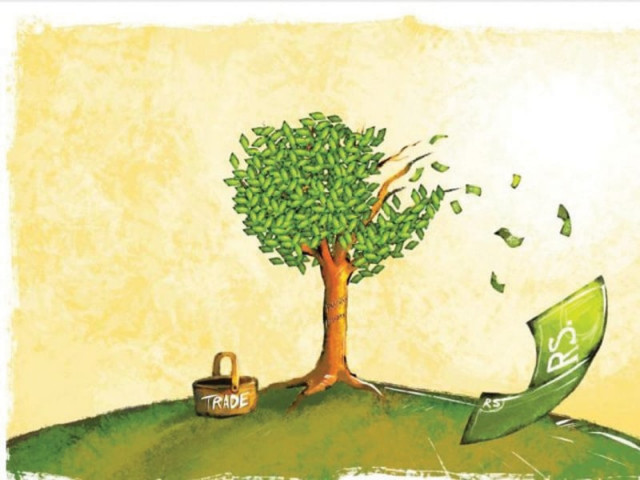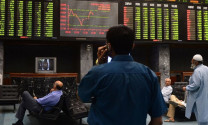Deficit shrinks in July as exports and imports drop
Slowdown in overseas shipments due to higher rupee-dollar rate.

Pakistan’s external trade sector took a depressing start in the first month of the new fiscal year as exports contracted almost 8% amid government’s decision to keep the exchange rate pegged at Rs99 to a dollar.
The latest trade figures released by the Pakistan Bureau of Statistics (PBS) showed that export receipts stood at $1.93 billion in July, showing a decline of $165 million or 7.9% compared to the same month of the previous fiscal year.
Imports also dipped 11.8% to $3.364 billion in July, down $450 million from purchases made overseas in July 2013.

Resultantly, the trade deficit in the first month of fiscal year 2014-15 shrank 16.6% to just $1.434 billion, $285 million less than the previous fiscal year.
The drop in exports highlights the difficulties the country may face in balancing its external accounts. According to analysts and government officials, the slowdown in exports was the result of government’s decision to keep the exchange rate at a certain level.
The external trade sector is trying to adjust to the new ground realities, although officially Islamabad follows a free-float exchange rate regime, they say.
At a press conference held on August 6, Finance Minister Ishaq Dar categorically stated that the government would not accept the International Monetary Fund’s dictation on exchange rate and the new fiscal year’s budget had been prepared on the assumption that the rupee would be exchanged at 99 to a dollar.
“The IMF is projecting the parity at Rs114 to a dollar. We have no intention to weaken our currency as any depreciation will be detrimental to foreign investment,” said Dar.
However, because of the prevailing political instability, the rupee shed its value by over Rs1.50 in the last one week and crossed the psychological barrier of Rs100 to a dollar on Monday. The parity stood at Rs100.0101 to a dollar, according to the State Bank of Pakistan. It was not yet clear whether the government would intervene in the market and bring the dollar below Rs100 and let it settle around Rs101, said the analysts.
Discussing the imports, the analysts attributed the drop to the cautious approach taken by the importers due to anticipated changes in the budget for 2014-15, announced in June.
The government has so far withdrawn many Statutory Regulatory Orders (SROs) aimed at raising tax revenues equivalent to 0.34% of gross domestic product (GDP) and rationalising the tariff regime.
National planners have projected a 5.8% growth in exports and 6.2% rise in imports in the current fiscal year. Imports have been put at $44.2 billion against $26.99 billion worth of exports with trade deficit at $17.2 billion.
Any shortfall in exports and higher-than-estimated imports will cause problems in financing the current account deficit, which has been estimated at $2.8 billion or 1.1% of GDP.
Month-on-month data
The month-on-month trade statistics also depict a depressing scenario. The deficit contracted 38% in July over June due to a fall in both imports and exports. Exports fell 4.8% in July compared to the previous month while imports fell 22.5%, PBS data showed.
Published in The Express Tribune, August 19th, 2014.
Like Business on Facebook, follow @TribuneBiz on Twitter to stay informed and join in the conversation.



















COMMENTS
Comments are moderated and generally will be posted if they are on-topic and not abusive.
For more information, please see our Comments FAQ